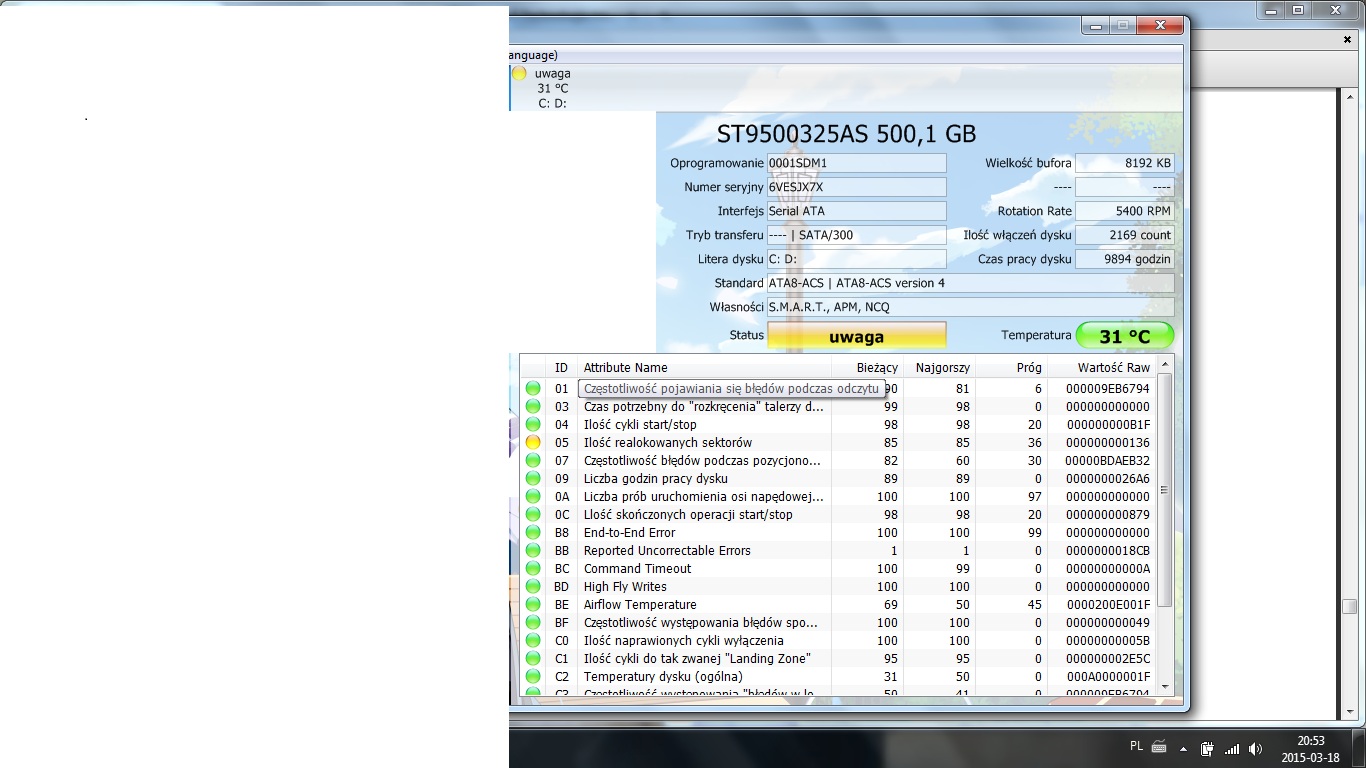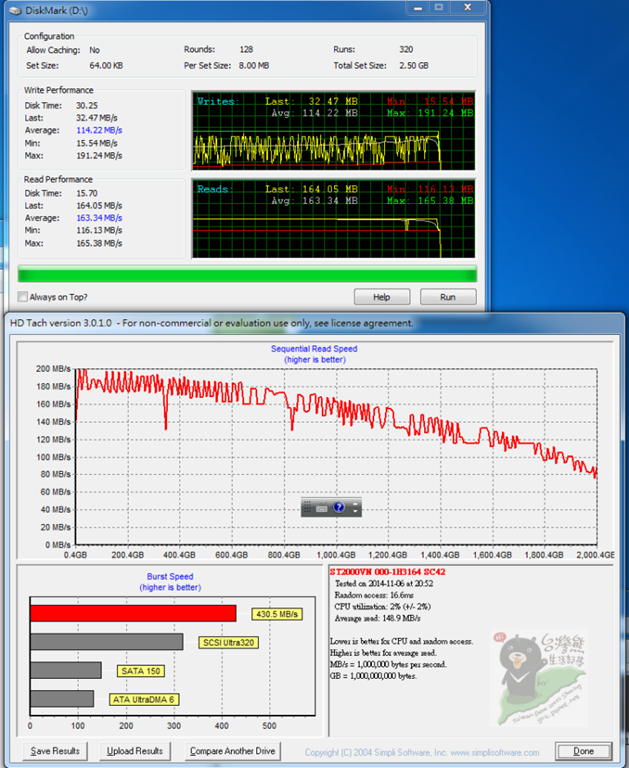
- #St4000vn000 crystal diskmark how to
- #St4000vn000 crystal diskmark zip
- #St4000vn000 crystal diskmark download
- #St4000vn000 crystal diskmark free
Simple tuning techniques like tweaking the read/write bias on the RAID controller’s cache, right-sizing the NTFS allocation units, and working with different stripe sizes can usually yield double the storage performance without spending a dime. Keep these original CrystalDiskMark screenshots in a shared folder for the group to access, and then challenge everyone involved to do better. Often I find that the OS’s drives perform even better because we just haven’t configured and tuned our storage. Compare the numbers for where you’re storing the valuable, high-performance data to where you’re storing the OS, and you might be surprised. So what’s a good or bad number? If your server boots from a mirrored pair of local drives, and stores its SQL Server data somewhere else (like on a larger array or on a SAN), then test the local mirrored pair too. The text version of the results has more details: You can get IOPs, latency, and throughput numbers from CrystalDiskMark too by clicking File, Save Text, then go into a text editor and open the results. You can see why people are tempted to store databases on there, but that’s a discussion for another day.
#St4000vn000 crystal diskmark free
Notice how the ephemeral SSD is 10x-30x faster on reads, and 4x-18x faster on writes? Not to mention that the ephemeral drive is completely free with your VM. Note how you can type in the bottom box of CrystalDiskMark’s results – see how I typed Amazon General Purpose SSD? That’s great for making notes that will be visible in the screen shots to help you determine which test results came from which machine.Īnd here is a set from an ephemeral SSD locally attached to that same EC2 VM: Here’s a sample set of results from a 335GB general purpose SSD volume in Amazon EBS: Usually I find that during the first round of storage tests, it’s not performing well period – and it doesn’t make sense to bring SQL Server into the game just yet. We’re not looking to get an exact representation of SQL Server’s IO patterns here – we’re just trying to get a fast, one-button-click-easy measurement of how storage performs. SQL Server stores stuff on disk in 8K pages, and zooming out a little, groups of 8 8KB pages (64K extents). The more astute readers (and by that I mean you, you good-looking charmer) will notice that 4K operations don’t really measure SQL Server’s IO. RND4K Q1T1 – Ignore, SQL Server doesn’t work like this.This is somewhat akin to an active OLTP server, or a TempDB drive. RND4K Q32T16 – random tiny operations, but many done at a time.SEQ1M Q1T1 – ignore, SQL Server doesn’t work like this.For SQL Server, this is somewhat akin to doing backups or doing table scans of perfectly defragmented data, like a data warehouse. SEQ1M Q8T1 – lots of long, sequential operations.While it runs, here’s an explanation of each row’s results: You want to test where your data, log, and TempDB files live, and for fun, also test the C drive and your desktop or laptop for comparison.Īfter making your choices, click the All button. Keep an eye on the free space there – you don’t want to create a test file that can run your server out of drive space. Just know that the bigger the test file, the longer it takes to generate. Smaller test file sizes may look fast but don’t really reflect how a large database will work. If you’re under the gun, do a quick 1GiB test, but for real go-live prep, I like using 32GB to reduce the chances that I’m just hitting cache and getting artificially fast numbers. If you want a fast seat-of-the-pants guess, do 1, but keep in mind it can be wildly variant between passes if something else happens to be going on in the SAN. 1 – the number of test passes you want to run.
#St4000vn000 crystal diskmark zip
The zip version can be just saved to a network share, and then anybody can run it from there.Īfter extracting the zip file’s contents, run DiskMark64.exe on an idle server or desktop first (not your live SQL Server, because it’ll slow things down while it runs.) It’ll look like this:Īcross the top, set the first three dropdowns to: The zip version doesn’t require an installer, which is cool because I’m not a fan of installing things on production servers.
#St4000vn000 crystal diskmark download
There are multiple download links – you want CRYSTALDISKMARK, not CrystalDiskInfo, and you want the Standard Edition, Zip Version. Go to the CrystalDiskMark download page, but PAY CLOSE ATTENTION.



(I’ll be charitable and not tell you which one.) Instead, let’s get seat-of-the-pants numbers for your storage. It takes knowledge and time, and you only have one of those.
#St4000vn000 crystal diskmark how to
I’ve written about how to test your SAN’s performance with SQLIO, but I’ll be honest with you: that’s the hard way.


 0 kommentar(er)
0 kommentar(er)
